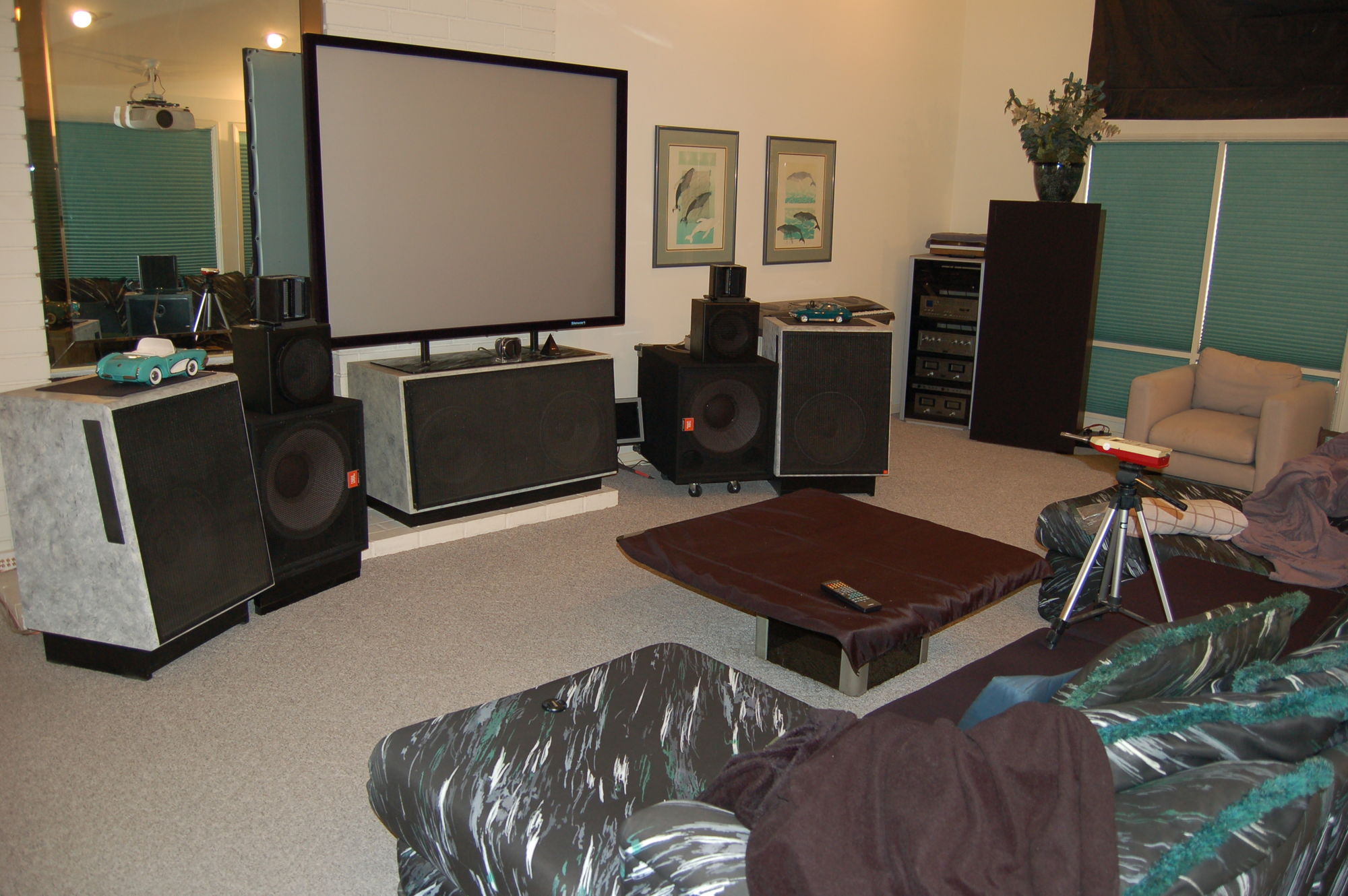The contenders are a Yamaha RX-Z9 in Pure Direct Mode and a Melton MKT-88 with push/pull KT-88s, Sylvania input and driver tubes, and tube rectifiers.
This is an SACD played on an Oppo95. The stereo direct RCA plugs (Canare 18 gauge) feed the "Pure Direct" on a Yamaha RX-Z9 solid state receiver (20 years old with well over 30,000 hours), rated at 170 WPC into the 6 ohm load. The speakers are connected with 14 gauge OFC cable.
The Oppo XLR stereo direct plugs (16 Monoprice/18 gauge Canare) feed to the Melton KT-88 (P/P KT-88s) rated at 80 WPC (purchased new last year with ~60 hours now). The speakers are connected with 12 gauge OFC cable.
The volumes were matched using the both the 1 kHz tone and pink noise tracks on the Stereophile test disk and ultimately matched to within less than 0.1 dBA using the pink noise track.
Nothing was moved or disturbed in the room at any time when comparing equipment.
The Vanessa Fernandez track was first played on the Yamaha (digital volume control in 0.5 dB steps) to establish the optimum camera recording level and the values recorded.
The camera was replaced with a professional sound level meter, the Vanessa disk was replaced with the Stereophile test disk and the levels for the Yamaha were recorded for the 1 minute track (Leq, Lmax, Lmin. L02, L08, L25, L50). To be statistically significant, this was repeated twice and the results of the three sets of measurements were within 0.1 dBA.
The track was changed to the Pink noise track and again, the levels were recorded for three sets of readings of the 2 minute track. The Yamaha was then shut off.
The speakers were then switched to the Melton and the amp was allowed to play a disk for over an hour before any testing.
I then put the 1 kHz track on the Melton and after many, many, many back and forth attempts on the Alps dial I was able to get the Melton to play the 1 kHz track within 0.1 dBA of the Yamaha and did three sets of readings. I then did three sets of reading using the Pink noise and of course because of the tube rolloff, this was 0.8 dB less than on the Yamaha.
I feel that Pink noise is better for comparison and brought the Pink noise on the Melton up to the level of the Yamaha (within 0.1 dBA) for the comparison.
So, at this point the Yamaha and Melton are within 0.1 dBA at that particular spot on the dial and I made the recording of Vanessa on the Melton.
I shut off the Melton, changed the speakers back over, and let the Yamaha warm up for an hour before making the same recording without moving the camera nor disturbing ANYTHING in the room other than my presence starting/stopping the recordings.
Know that if you find the recordings bright, both the 10" and Heil have L-pads turned to full, which provides the flattest response across the band, even if it does sound bright. And it may be that you find the tube too dull and the solid state too bright, which shows the importance of matching equipment and speakers for your taste.
Also, realize that when you sit back into the couch, the proximity of the cushions, as opposed to a camera tripod sitting up over the couch) takes a lot of brightness out. Even a few inches can make a difference which is why it was so important not to move the camera between recordings.
If you can’t hear "meaningful" differences, you need to update your playback system or listen on headphones.
https://youtu.be/HTxZJBoOywM
https://youtu.be/FDIu2BFbt-Q
https://youtu.be/W66SQS1wDUA
https://youtu.be/ZxhDJ_eOlYw





